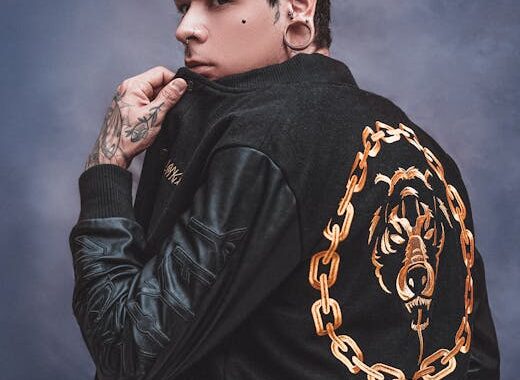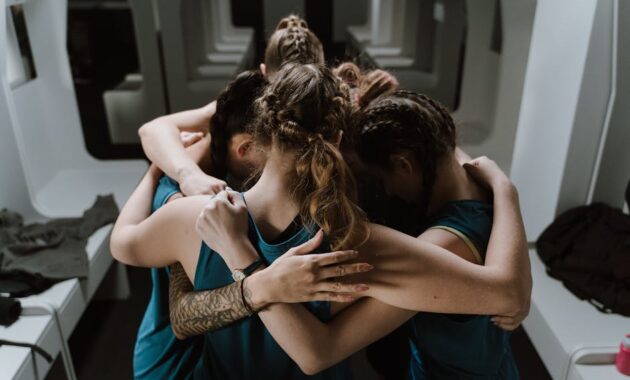A Slick Guide to 1950s Men’s Hairstyles: Trends, Icons, and How to Achieve the Look Today
The 1950s were a golden age for men’s hairstyles, a period defined by sharp lines, polished finishes, and a distinct rebellion against the preceding era. From the perfectly sculpted pompadour to the effortlessly cool crew cut, 1950s men’s hairstyles reflected the societal shifts and burgeoning cultural trends of the time. This exploration delves into the iconic styles, the cultural context, and how to achieve these timeless looks today.
The Rise of the Pompadour: A Symbol of Masculinity
Perhaps the most iconic 1950s men’s hairstyle, the pompadour, epitomized the era’s emphasis on masculine style and confidence. Its high volume and sculpted shape, often accompanied by slicked-back sides, projected an image of rebellious charm and sophistication. Made famous by icons like Elvis Presley, the pompadour wasn’t just a hairstyle; it was a statement. The height and shape of the pompadour varied, reflecting individual tastes and trends within the decade. Some opted for a more conservative, less voluminous version, while others embraced the dramatic height, often using copious amounts of hair pomade for maximum hold and shine. The pompadour’s enduring appeal lies in its versatility; it can be adapted to various hair lengths and textures, making it a timeless choice for those seeking a bold and stylish look. [See also: The Evolution of Men’s Hairstyles]
The Classic Crew Cut: Simplicity and Clean Lines
In contrast to the flamboyant pompadour, the crew cut offered a clean-cut, understated alternative. This short, military-inspired style emphasized neatness and precision. The crew cut’s popularity stemmed from its practicality and ease of maintenance, making it a favorite among men of all walks of life. Its simple yet elegant design made it suitable for both formal and informal occasions, solidifying its position as a timeless classic. The short length and tapered sides of the crew cut provided a sharp, defined look that complemented the era’s tailored clothing styles. While less dramatic than the pompadour, the crew cut reflected a sense of understated masculinity and refinement. [See also: Understanding Different Hair Textures and Styling Techniques]
The Quiff: A Blend of Volume and Sophistication
The quiff offered a middle ground between the pompadour’s dramatic height and the crew cut’s simplicity. This style involved a slightly raised front section of hair, creating volume and texture without the excessive height of a full pompadour. The sides were typically kept shorter, creating a balanced and sophisticated look. The quiff allowed for greater versatility in styling, enabling men to adapt the look to suit different occasions and personal preferences. It was a popular choice for those who desired a touch of rebellion without committing to the bold statement of a full-blown pompadour. The quiff remains a popular style today, demonstrating its enduring appeal and adaptability.
The Influence of Hollywood and Pop Culture on 1950s Men’s Hairstyles
The iconic hairstyles of the 1950s were significantly shaped by Hollywood’s influence and the rise of popular culture. Stars like James Dean, Marlon Brando, and Elvis Presley became style icons, their hairstyles influencing the trends adopted by young men across the nation. Movies and magazines played a crucial role in disseminating these styles, contributing to their widespread popularity. The rise of rock and roll further amplified the impact of these styles, associating them with youth rebellion and a sense of liberation. The hairstyles of the era mirrored broader social and cultural changes, reflecting the changing attitudes and aspirations of a post-war generation.
Products and Techniques: Achieving the 1950s Look Today
While the hairstyles of the 1950s might seem challenging to replicate today, with the right products and techniques, they are surprisingly achievable. Hair pomade, a staple of the era, provided the hold and shine necessary to sculpt these styles. Modern pomades offer a variety of holds and finishes, catering to different hair types and desired looks. A good quality hair dryer and comb are also essential tools for creating volume and achieving the desired shape. For those seeking a more modern interpretation, hair wax or clay can offer a less shiny, more matte finish. Mastering the art of applying the product evenly and using a comb to sculpt the hair is crucial for achieving an authentic 1950s look. Numerous tutorials and guides are available online, offering step-by-step instructions for recreating these iconic styles. Remember, practice makes perfect when it comes to mastering these vintage looks.
Beyond the Pompadour and Crew Cut: Exploring Other 1950s Styles
While the pompadour and crew cut were dominant styles, the 1950s also saw other notable trends in men’s hairstyles. Variations on these styles, such as the side part, the ducktail, and the DA (duck’s ass), offered a range of options for men with different preferences. These styles often involved careful shaping and attention to detail, reflecting the era’s emphasis on grooming and presentation. The choice of hairstyle often communicated social status, personal style, and a sense of individual expression.
The Enduring Legacy of 1950s Men’s Hairstyles
The hairstyles of the 1950s continue to inspire and influence modern men’s fashion. Their enduring appeal lies in their versatility, timeless elegance, and ability to project a sense of confidence and style. From the bold pompadour to the sleek crew cut, these styles embody the spirit of an era and remain a popular choice for those seeking a classic, sophisticated, and undeniably cool look. Their adaptability allows modern interpretations, making them relevant and stylish even today. Understanding the context and history of these iconic hairstyles enhances their appreciation and allows for a deeper understanding of the men’s fashion trends that have shaped our current style landscape. Indeed, the 1950s men’s hairstyles continue to influence trends and inspire stylists and fashion enthusiasts globally. The legacy of these iconic looks remains a strong testament to their enduring charm and timelessness.
Maintaining 1950s Hairstyles: Tips and Tricks
Maintaining a 1950s hairstyle requires dedication and the right products. Regular trims are essential to keep the shape and lines sharp. Using a good quality hair pomade or styling product that matches the desired level of hold and shine is crucial. Learning the proper techniques for applying the product and using a comb to sculpt the hair is key to achieving and maintaining the style throughout the day. Regular washing and conditioning will keep the hair healthy and manageable, making styling easier. Ultimately, mastering a 1950s hairstyle is about understanding your hair type, using the right products, and practicing the techniques needed to achieve and maintain the desired look.
1950s Men’s Hairstyles and Modern Adaptations
Many contemporary hairstyles draw inspiration from the classic 1950s cuts. Modern stylists often incorporate elements of the pompadour, quiff, and crew cut into more contemporary looks, updating them for modern sensibilities. This fusion of vintage style and modern techniques allows for a wide range of creative interpretations. The underlying principles of volume, texture, and carefully sculpted lines remain relevant, ensuring that the spirit of the 1950s hairstyles continues to resonate in modern men’s fashion.


